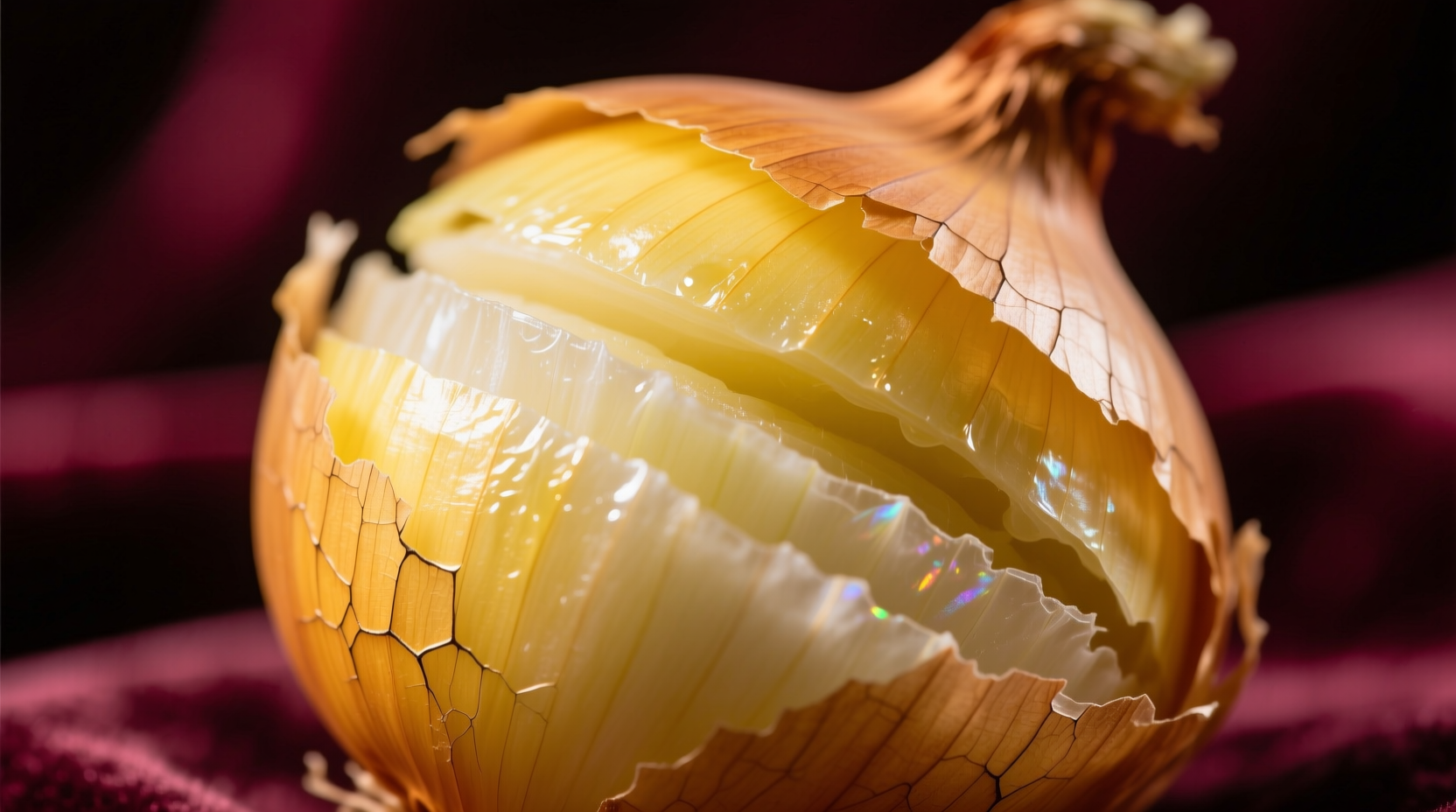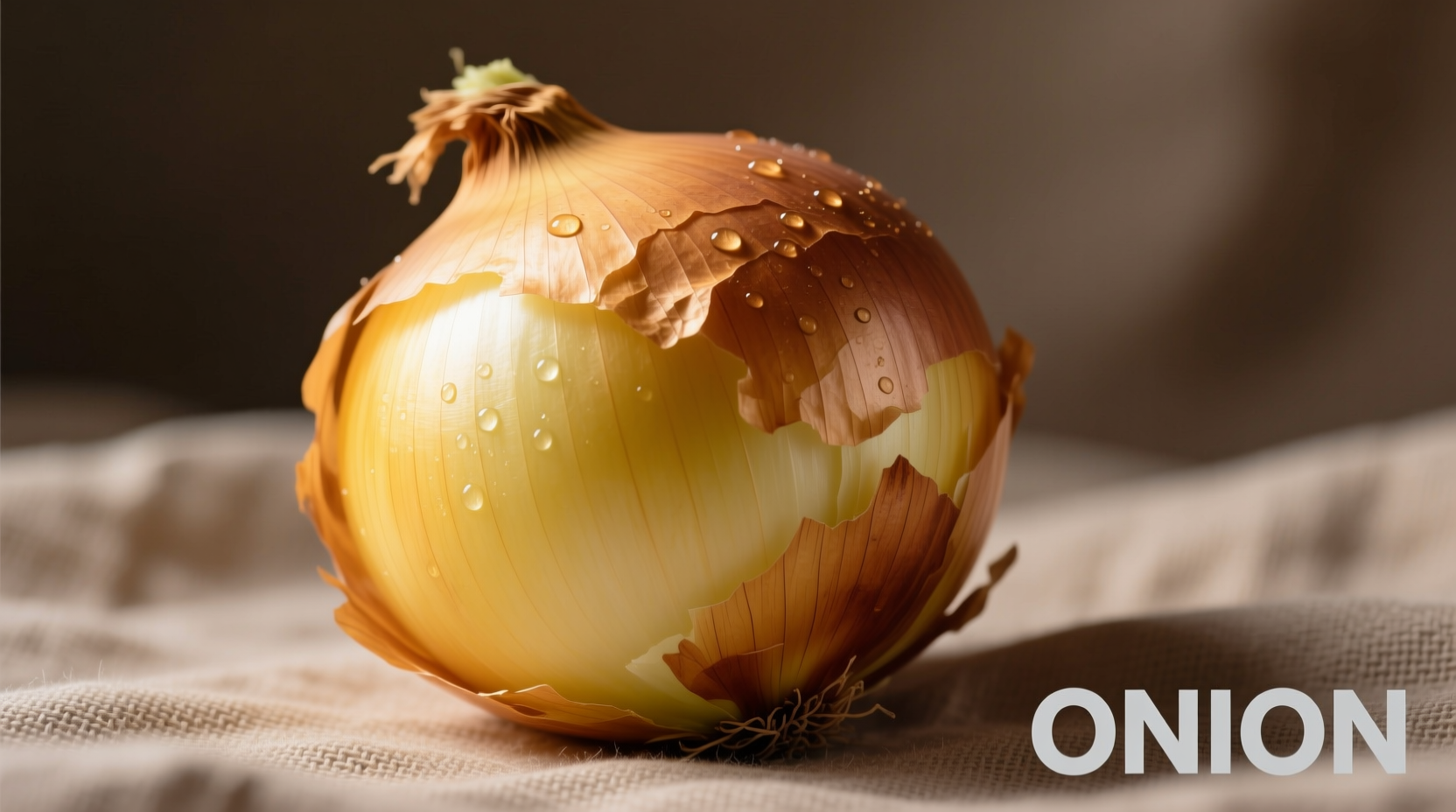Here's exactly what an onion looks like: a round-to-oval bulb with papery outer skin ranging from golden yellow to deep purple, containing concentric white or purple-tinted layers inside. This visual guide shows onion anatomy, varieties, and practical identification tips for cooks and gardeners.
Understanding Onion Anatomy: A Visual Reference
When you search for a picture of an onion, you're likely looking for more than just a basic image. You need to understand what makes an onion distinctive, how to identify different varieties, and what to look for when selecting onions for cooking or gardening. Let's explore the visual characteristics that define this essential kitchen staple.

Key Visual Features of Onions
Onions belong to the Allium family and share distinctive visual characteristics that make them easily recognizable:
External Structure
- Papery outer skin: Dry, translucent layers that protect the inner flesh
- Shape: Typically round or oval, though some varieties are more flattened
- Neck: The tapered top where green shoots would emerge
- Root plate: The flat bottom with small root remnants
Internal Structure
- Concentric layers: Multiple fleshy layers surrounding the core
- Color variations: White, yellow, or purple depending on variety
- Central core: A small, firmer center that's often removed in cooking
Common Onion Varieties Visual Guide
Not all onions look the same. Understanding visual differences between varieties helps you select the right onion for your culinary needs. Here's how to visually distinguish between common types:
| Variety | Outer Appearance | Inner Color | Common Uses |
|---|---|---|---|
| Yellow Onion | Golden-brown papery skin | White with yellow tinge | General cooking, caramelizing, soups |
| Red Onion | Purple-red skin | Vibrant purple rings | Salads, salsas, pickling, garnishes |
| White Onion | Pale white to light tan skin | Crisp white flesh | Mexican cuisine, fresh salsas, grilling |
| Sweet Onion | Lighter yellow skin, often larger | Pale yellow, higher water content | Eating raw, sandwiches, grilled dishes |
How to Identify Quality Onions by Appearance
When selecting onions, visual cues indicate freshness and quality. Here's what to look for:
- Firmness: Should feel solid with no soft spots when gently squeezed
- Skin condition: Dry, papery skin without mold or excessive dirt
- Sprouting: Avoid onions with green sprouts emerging from the center
- Mold signs: Dark spots or fuzzy growth indicate spoilage
- Neck condition: Tight, dry necks indicate freshness; soft or moist necks suggest aging
Onion Growth Stages: What Different Development Looks Like
Understanding how onions develop visually helps gardeners determine harvest time and cooks recognize different maturity stages:
- Seedling stage: Thin green shoots emerging from soil
- Mid-growth: Visible bulb beginning to form at soil surface
- Near maturity: Bulb fully formed but still covered by green tops
- Harvest ready: Tops begin to yellow and fall over naturally
- Cured storage: Papery outer layers fully dry, neck completely sealed
Practical Identification Tips for Cooks and Gardeners
These visual identification techniques help you work with onions more effectively:
- Distinguishing from similar vegetables: Onions have distinctive concentric layers, unlike garlic (individual cloves) or shallots (more elongated with fewer layers)
- Recognizing spoilage: Dark spots, soft areas, or mold growth indicate onions should be discarded
- Identifying sprouting: Green shoots emerging from center affect flavor and texture
- Seasonal appearance: Freshly harvested onions have more moisture and less dry skin than stored onions
Why Onions Look the Way They Do: The Science Behind the Structure
The distinctive layered structure of onions serves important biological functions. Each layer represents a modified leaf that stores energy and nutrients for the plant. The papery outer skin develops as older leaves dry out, creating a protective barrier against moisture loss and pathogens. This structure explains why onions have such a long shelf life compared to many other vegetables.
According to research from the USDA Agricultural Research Service, the color variations in onions come from different pigment compounds. Yellow and red onions contain flavonoids called anthocyanins, with red onions having higher concentrations that create their distinctive purple hue. White onions lack these pigments entirely, resulting in their pale appearance.
Using Visual Identification to Enhance Your Cooking
Understanding onion appearance helps you make better culinary decisions:
- Yellow onions' higher sulfur content makes them ideal for cooking, developing sweet flavors when caramelized
- Red onions' vibrant color fades when cooked but makes them perfect for raw applications
- Sweet onions' higher water content means they cook down more than pungent varieties
- Smaller onions often have more concentrated flavor than larger specimens of the same variety











 浙公网安备
33010002000092号
浙公网安备
33010002000092号 浙B2-20120091-4
浙B2-20120091-4